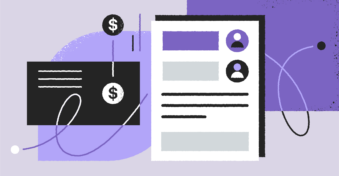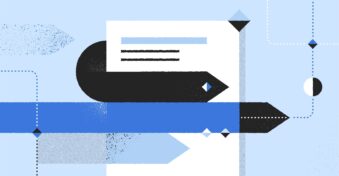Waivers are essential legal documents that individuals or organizations must sign to absolve themselves or another party of responsibility. This document contains exculpatory conditions (in written form) for which the responsible party won’t have to face legal action or fines.
Although this is standard procedure in some sectors, you might have to request waivers if you are in academia or when interacting with the government.
In this article, we’ll explore what it means to request a waiver and how to apply for it successfully. Continue reading to find out if you need to request a release of liability.
What Is a Waiver?
A waiver is a term that refers to a legal document in which an entity waives their rights to hold the other signing party responsible for damages. This document is also referred to as a release of liability or hold harmless agreement.
In essence, waivers can cover all or parts of the risks involved in a high-risk activity, provided all entities are consenting adults with a proper command of the language being used. Most times, businesses and establishments that engage in high-risk activities use them to inform you of the potential risks of any decision.
Another definition of a waiver is a document that confers special privileges to an individual or organization in extenuating circumstances, including poverty and poor health. In these situations, you have to request it yourself.
What Does It Mean to Request a Waiver?
Requesting a waiver is a personal decision you must make based on your current situation. Although the standard practice is that you get handed a waiver once you enter, for example, a water park or zoo, you might have to apply and ask for a waiver in other instances.
Students seeking admission to higher education at a tertiary institution can request a waiver if they cannot afford the fees. This is called a fee waiver, and we’ll discuss it later.
Private employees can request an insurance waiver if they have other coverage. Similarly, government employees can request an overpayment waiver after getting paid more than the usual amount.
Types of Waiver Requests
Here are the common waiver examples you should know:
Waiver for academic requirements
If you are seeking admission into college, a fee waiver can help you cut down the amount you have to pay — a select amount or percentage, perhaps by half or even completely. You have to put in an official request for the college or university to charge you only a portion of the stipulated fees. For your request to go through, you must demonstrate financial hardship with corroborating evidence.

You can also request a waiver for English language competency if you meet the following requirements:
- The test expired recently.
- You are barely a few points from the cutoff mark.
- You can prove proficiency in a professional capacity.
Financial waiver requests
You can use insurance waivers to refuse a rental company’s proposed coverage when renting a car. Similarly, if your credit card debt exceeds what you can handle, you can request a debt cancellation from the card issuer.
The Guaranteed Asset Protection (GAP) waiver is another release for a financial debt you can obtain. Let’s say the car you just bought got swept up in a hurricane — you still have a substantial amount owed on the car loan, perhaps more than what your insurance company covers. If you purchased the GAP waiver when getting the loan, this waiver is then applied to forgive the remaining debt after your insurance company pays the lender what it decides the car is worth.
In the same vein, if you receive your paycheck and find out you have been overpaid, you can request an overpayment waiver successfully under the following circumstances:
- Your financial situation means you earn more than you spend.
- You are not at fault for the overpayment.
- You rejected welfare benefits because of the overpayment.
- A sign of good faith that shows the overpayment did not result from the beneficiary’s willingness to deceive.
Medical waiver requests
Medical waivers can save you from facing the financial and legal consequences of not fulfilling an obligation or part of your contract.

For instance, if you booked a reservation and couldn’t make it because a family member was sick, you can apply for a refund if you have a medical waiver from a certified physician.
Medical waivers under Medicare, Medicaid, CHIP, or HIPAA are called 1135 waivers.
Before joining the military or law enforcement, you must pass certain health checks to meet the minimum recruitment requirements. But if you have a condition that could hurt your chances, you can request a medical exemption.
How to Request a Waiver
Now that you know who needs to request a waiver, let’s go through the application process. Whether you are a civilian or active service member, your request should follow a similar procedure.
- Write an official letter in a formal tone explaining your situation and your purpose for requesting this exemption. If you are a member of an established company or entity, consider using a letterhead that contains your address, name, organization, and title. Use a formal greeting.
- Get straight to the point. Write about your financial situation and why you can’t pay your fees or retake the language competency test. You must also express that you understand the rules, especially if you are applying for a military medical exemption.
- Include a list of your recommendations if that’s one of the compulsory requirements.
- If you are a minor, your parents must show their approval in writing. You can attach the letter to your waiver request.
- Close out the letter with a polite greeting and sign your name at the bottom.
How to sign your waiver request online
You can also collect and sign your forms using PandaDoc Waivers. This free software is legally binding in the United States and other parts of the world. Follow these steps to use PandaDoc Waivers:
- Open the web interface.
- Drag and drop your file onto the interface to upload.
- Drag the text field from the dashboard to the part of the document you want.
- Add your signature, initials, and date.
- Click on “Save and publish” to complete the process.
You can now download the file and send the signed waiver to your school, recruitment center, or other entity. If you need someone else to sign it, you can share it with a protected URL.
Conclusion
Requesting a waiver can save you from some financial problems. It can also assist you by protecting you from further complications should unforeseen circumstances occur, like diseases or military exclusion. Follow the steps in this guide when creating your request. And if you are in a hurry, you can use the legally binding PandaDoc Waivers to expedite the signing process for free.


